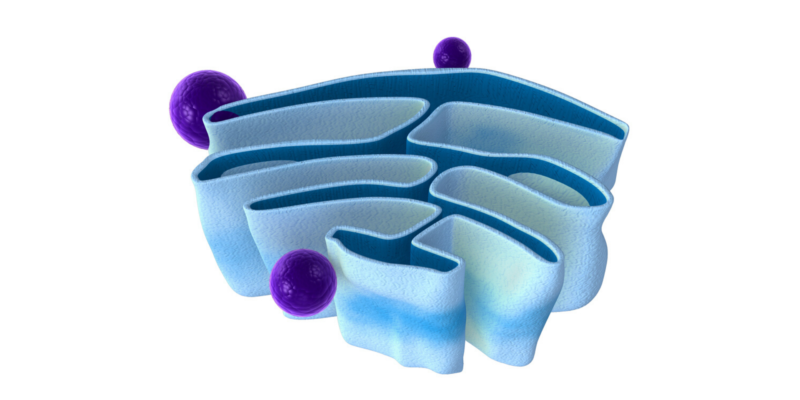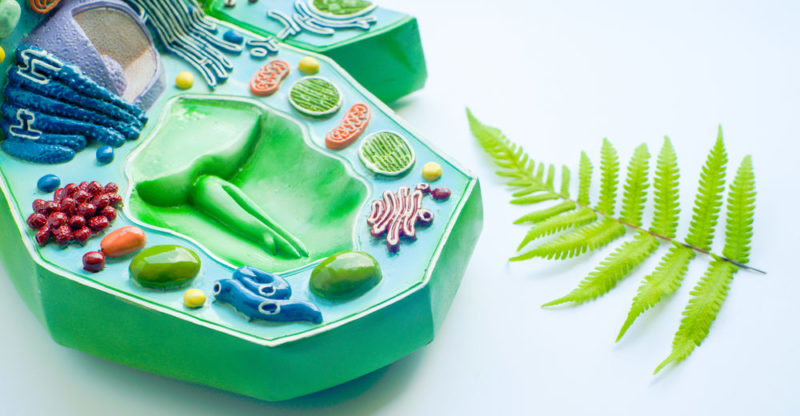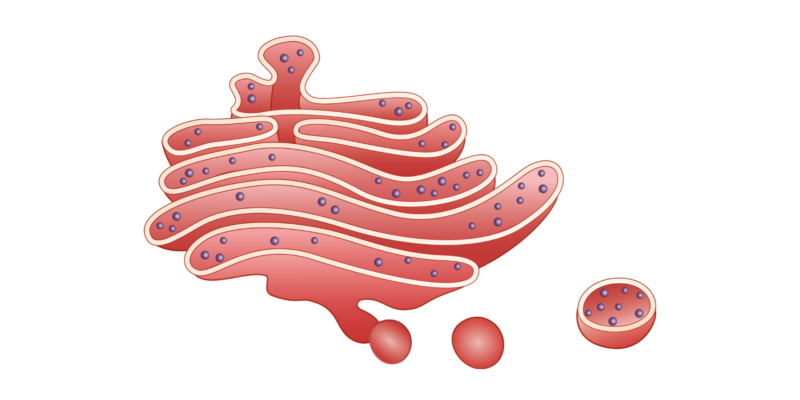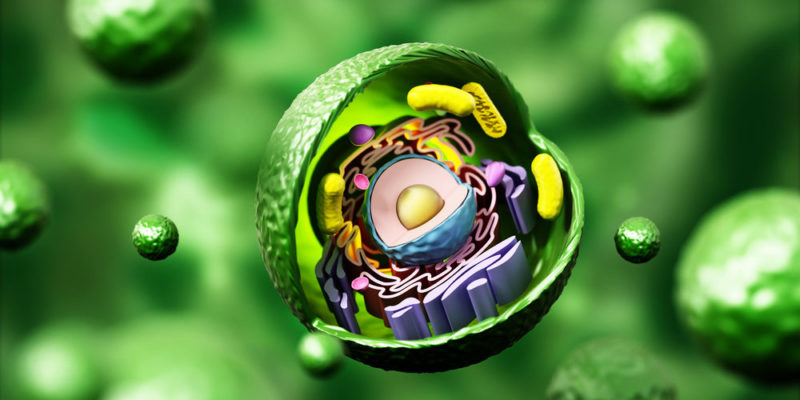We explain what the Golgi apparatus is, what its structure is like and what its functions are. In addition, its characteristics and diseases.
What is the Golgi Apparatus?
The Golgi apparatus is an organelle that contains all eukaryotic cells (those that have a defined nucleus in their cytoplasm ) and that is part of the endomembrane system.
Cells can have one or more of these Golgi apparatuses (in fact, plants have hundreds of them), generally located near the cell nucleus and the endoplasmic reticulum, in the cytoplasm.
Depending on the cell, each apparatus can contain a variable number of cisternae , that is, stacked "bags" to contain proteins or lipids. In this way, it is an essential organelle for cellular life and for the fulfillment of organic synthesis.
Golgi apparatus name

The name of the Golgi apparatus comes from its discovery at the beginning of the 20th century , when the Italian scientist Camilo Golgi, winner of the Nobel Prize for Medicine in 1906, managed to describe them in great detail, based on the initial observations in 1897 of the Spaniard Santiago Ramón and Cajal, with whom he shared the award.
The use of the electron microscope after 1950 confirmed Golgi's descriptions quite accurately.
Dictyosomes of the Golgi apparatus
The Golgi apparatus consists of dictyosomes, which are a set of membranous saccules , that is, submicroscopic, flattened, stacked containers, surrounded by a tubular network and by a set of vesicles.
Inside each dictyosome are the cisterns where the proteins are “packaged”. Actually, talking about dictyosomes, the Golgi apparatus or the Golgi system is basically talking about the same thing.
Golgi Apparatus Size
The size of the dictyosomes and the cisterns of the Golgi apparatus is variable, depending on the type of cell, the species and its metabolic instant . It is generally estimated to measure between 1 and 3 microns in diameter.
Structure of the Golgi apparatus

The Golgi apparatus encompasses three distinct functional regions:
- Cis-golgi region. The innermost portion, and closest to the rough endoplasmic reticulum (RER), from which vesicles with newly synthesized proteins come.
- middle region. A transition zone between the Cis and Trans regions.
- Transgolgi region. It is closest to the plasma membrane , and it is there that the membranes are modified so that each protein and lipid is sent to its specific destination.
Functions of the Golgi Apparatus
 The general function of the Golgi apparatus is to "package" and "mark" each protein vesicle so that it is successfully sent to its destination, just as a product packaging plant does.
The general function of the Golgi apparatus is to "package" and "mark" each protein vesicle so that it is successfully sent to its destination, just as a product packaging plant does.In this sense, the Golgi apparatus checks that the product has no defects , that it is complete and assembled, joining simple molecules to form other complex ones and correspondingly identifying them according to their destination: other cellular organelles or the cellular membrane, to be secreted at the environment.
Other functions of the Golgi apparatus include:
- Absorb substances from the cytoplasm. As water , sugars or lipids, especially from the formation of secretory vesicles.
- form secretory vesicles. Create the protein sacs that transport their contents out of the cell.
- Create enzymes . Numerous enzymes have their origin in this organelle, since they are proteins with specific functions.
- Create specialized substances. To contribute to the cell membrane, to the constitution of specialized cells (such as sperm), proteins such as milk, etc.
- secrete glycoproteins. The proteins that contain carbohydrates (sugars), are constituted inside.
- produce lysosomes. Organelles responsible for cellular digestion.
Gallbladder types
 The transport vesicles that traverse the Golgi apparatus can be of the following types:
The transport vesicles that traverse the Golgi apparatus can be of the following types:
- constitutive. They contain proteins whose destination is outside the cell, through constitutive secretion (exocytosis) that takes place at the plasma membrane.
- Regulated. Secretory vesicles that are also destined for the outside of the cell, but not immediately: they will be stored in the cell waiting for their trigger stimulus to occur. This process is called regulated secretion.
- Lysosomal. Its destination is the lysosomes: organelles generated by the Golgi system itself, responsible for breaking down external substances that enter the cell (cellular digestion).
Golgi apparatus transport mechanism
The exact mechanism of how proteins move through the Golgi apparatus is not yet clear. But there are two main hypotheses as to how it happens:
- Cistern maturation model. The generation of the new cisterns would “push” the old ones through the apparatus.
- Vehicle transport model. This theory assumes the Golgi apparatus as a stable and static entity, and that the movement of the vesicles is due rather to the nature of the proteins inside it.
Lysosome function
The lysosomes generated by the Golgi apparatus contain hydrolytic and proteolytic enzymes , capable of breaking down the material of extracellular or intracellular origin, that is, in charge of cellular digestion.Lysosomes are pockets of enzymes that, if released into the cell, would completely destroy the cell . Therefore, these organelles have a specialized membrane that prevents it. Lysosomes are common to animal cells, but not to plant cells .
Importance of the Golgi Apparatus
 This apparatus is of vital importance in the protein generation circuit of cells and, by extension, of living beings . It serves as a link between the interior of the cell (the nucleus and the endoplasmic reticulum, where proteins are produced) and the exterior of the cell. It is a crucial biochemical transport mechanism.
This apparatus is of vital importance in the protein generation circuit of cells and, by extension, of living beings . It serves as a link between the interior of the cell (the nucleus and the endoplasmic reticulum, where proteins are produced) and the exterior of the cell. It is a crucial biochemical transport mechanism.
Diseases related to the Golgi apparatus
There are some cases in which Golgi apparatus defects result in diseases such as Mucolipidosis II, a disease that affects the Golgi apparatus protein identification mechanism , so that cell digestion cannot be carried out correctly and lysosomes They fill with undigested material. It is a congenital ailment with fatal consequences, which does not allow life to exceed 7 years of age.Many other conditions under current study are thought to originate from Golgi defects, such as Pelizaeus-Merzbacher disease, Angelman syndrome, wrinkled skin syndrome, and Ducheme muscular dystrophy, among others.
The above content published at Collaborative Research Group is for informational and educational purposes only and has been developed by referring to reliable sources and recommendations from experts. We do not have any contact with official entities nor do we intend to replace the information that they emit.
Cultural journalist with great interest in education and technological innovation in the classroom. The future passes through technology and it is already here. .
Leave a reply
Your email address will not be published. Required fields are marked *Recent post

Sport: What Is It, Types, Risks, Features, Characteristics and Examples

Dogs: Emergence, Features, Characteristics, Feeding and Breeds

Story: Definition, Elements, Structure, Features and Characteristics

